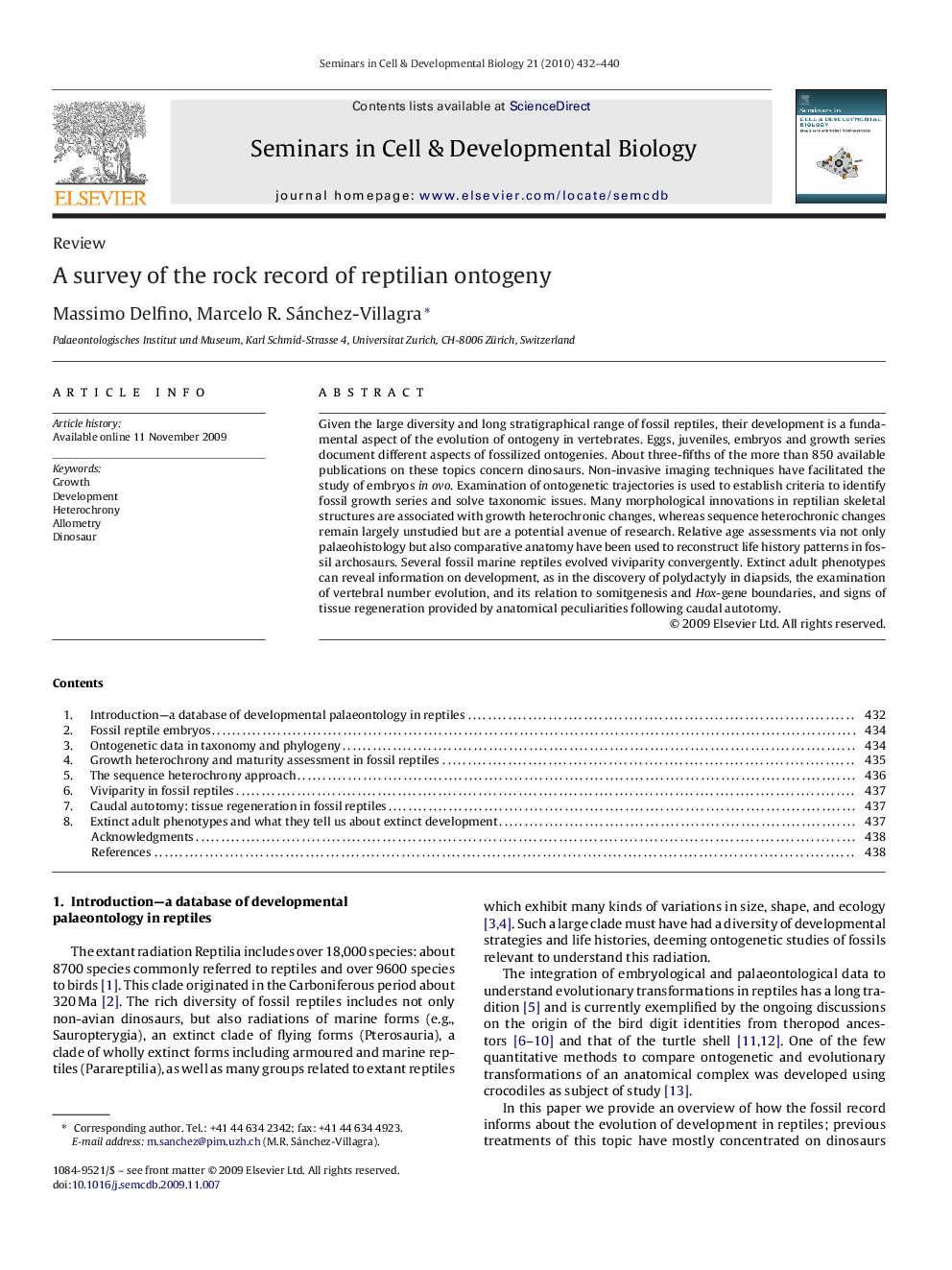| Article ID | Journal | Published Year | Pages | File Type |
|---|---|---|---|---|
| 2202790 | Seminars in Cell & Developmental Biology | 2010 | 9 Pages |
Given the large diversity and long stratigraphical range of fossil reptiles, their development is a fundamental aspect of the evolution of ontogeny in vertebrates. Eggs, juveniles, embryos and growth series document different aspects of fossilized ontogenies. About three-fifths of the more than 850 available publications on these topics concern dinosaurs. Non-invasive imaging techniques have facilitated the study of embryos in ovo. Examination of ontogenetic trajectories is used to establish criteria to identify fossil growth series and solve taxonomic issues. Many morphological innovations in reptilian skeletal structures are associated with growth heterochronic changes, whereas sequence heterochronic changes remain largely unstudied but are a potential avenue of research. Relative age assessments via not only palaeohistology but also comparative anatomy have been used to reconstruct life history patterns in fossil archosaurs. Several fossil marine reptiles evolved viviparity convergently. Extinct adult phenotypes can reveal information on development, as in the discovery of polydactyly in diapsids, the examination of vertebral number evolution, and its relation to somitgenesis and Hox-gene boundaries, and signs of tissue regeneration provided by anatomical peculiarities following caudal autotomy.
